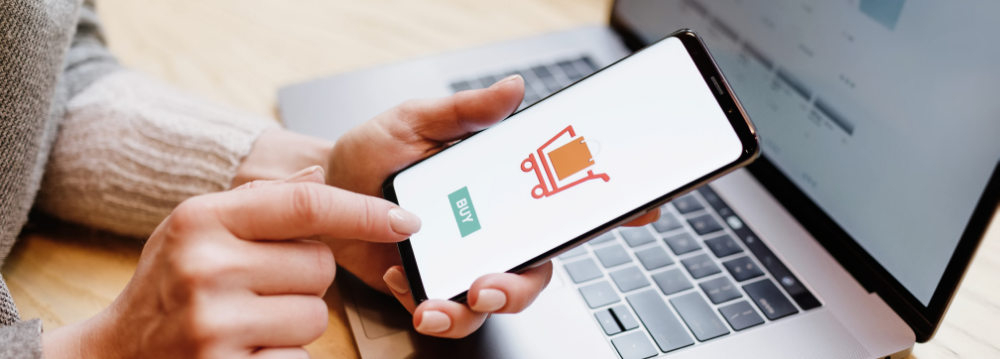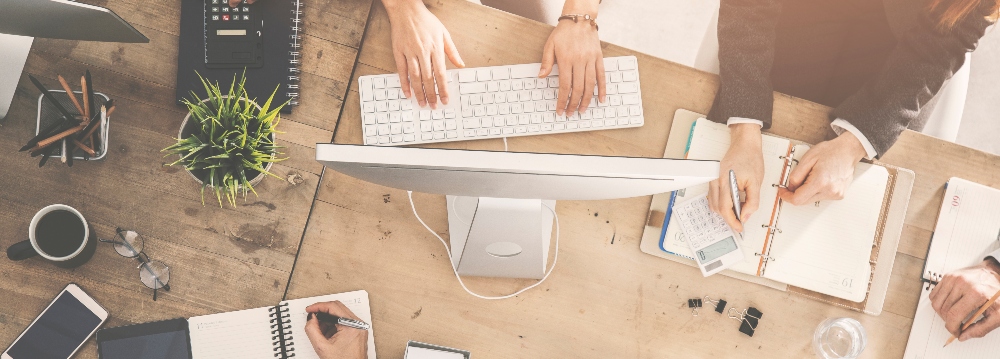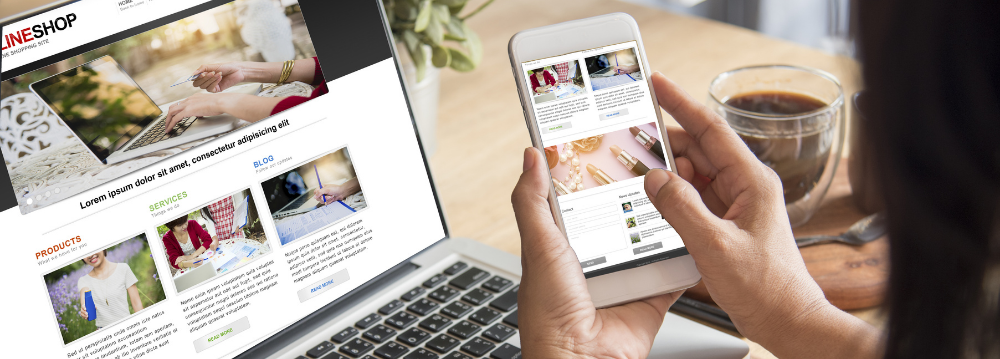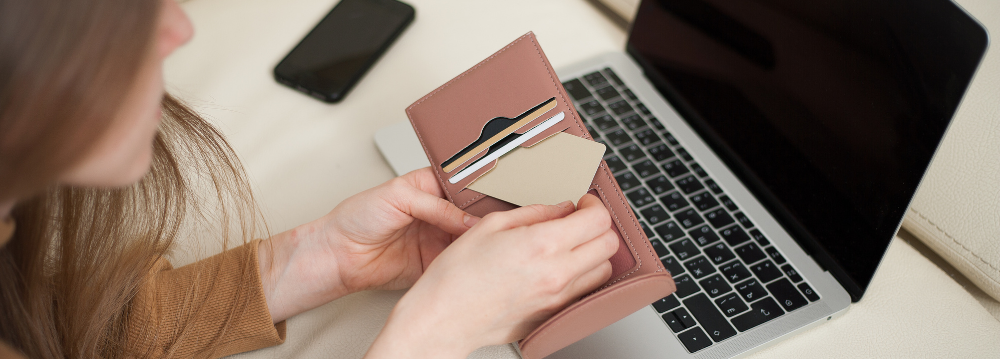In times of rapid and impactful changes in the Brazilian economic scenario, we look at some important sectors in the search for answers. Here’s what we found.
The last 18 months have been turbulent, to say the least, in more than one aspect. Economic policies, health issues, social restrictions, all these and more have led to significant changes in various sectors of the economy. Face-to-face commerce, for example, suffered declines during the harshest months of the pandemic, while online sales rose throughout the period. Similarly, the so-called digital products (those that are bought and consumed online, such as games, streaming, and e-learning) also performed very well during the period. This forms a clear example of how technology has taken on an important role in this segment and has kept the digitalization tendency growing: the process was already ongoing in the country and was highly accelerated by the pandemic.
Therefore, sectors that were unable to take their activities to digital suffered noticeable drops, such as the events and the travel industry. According to research conducted by the AMI, the latter had a hard fall of 57% in turnover, adding to the unemployment line in the country. Another relevant point in the survey was the one that pointed out the fall in cross-border purchases due to the currency crisis in Brazil and problems in the supply chain of suppliers such as China, due to the pandemic. Fortunately, the outlook is for improvement for both sectors, as vaccination campaigns evolve and the health crisis gets more under control.
A closer look at three critical areas
Once we have analyzed some important figures, it is time to bring a more critical and analytical look at these very significant sectors of the country’s economy. The goal is to better understand what happened and try to predict the next events in the country, in order to facilitate planning and strategy development for various markets.
Retail
As mentioned earlier, retailers were forced to turn to technology to survive the harsh restrictions imposed by the pandemic, using e-commerce as a way out of the drop in face-to-face sales. With the slowdown of the pandemic, a reversal of the downward trend in in-person sales was observed, according to a study by Mastercard, which may indicate a resumption of sales in malls and physical stores just in time for dates such as Children’s Day and Black Friday.
Even if the recovery of physical sales happens as predicted, it is unlikely that consumer habits will fully return to the previous level; with the good technological and logistical infrastructure developed, the online shopping experience has improved and should keep most consumers loyal. Likewise, certain products have become part of Brazilians’ purchase profile, reflecting the greater time spent indoors.
Here, it is worth noting the increase seen in personal hygiene products, health and wellness (such as exercise equipment, which has grown by +300%), decoration (fresh flowers in particular), wines, and more. The average ticket had an increase of 8% compared to 2019 and the volume of products acquired online has gone up by 44%.
Interestingly, even with the drop of 13% in international shopping as a whole, many of these products are still bought from overseas sites, especially when looking for specific items not easily found here or for sales.
Tourism
Without the possibility of going abroad and with restrictions on air travel, the country’s travel vertical e-commerce fell 59% between 2019 and 2020, with many Brazilians opting for shorter trips by road. Destinations such as the coast, farm hotels, inns, and similar have gained space in the pandemic, acting as substitutes for longer trips, also harmed by the high dollar. Another interesting factor is the rise of luxury tourism in the country. With restrictions on access to Europe and the USA, preferred destinations for the high-income population, luxury hotels and resorts started to attract more local guests.
In this market, technology has also helped to bring suppliers and consumers closer together. Through websites that search for tickets and accommodation, that registered hotel occupancy rates falling 20% by the end of 2020 according to the Brazilian Hotel Industry Association, people can choose visitation options right from their computers and cell phones, doing business right from home and thus keeping the tourism sector active.
Digital products and services
Finally, looking at the sector that has really triumphed in the pandemic with 50% growth, digital goods have shown their mettle over the last few months. Streaming videos and music, online games, distance learning, productivity, and professional collaboration apps are among the many products of this segment that are now part of most Brazilians’ lives.
The confluence of a large volume of cell phones, better mobile internet connectivity, and excellent product options on the market has caused this branch to grow remarkably. According to Hootsuite, in 2020, Brazilians spent 10 hours on the internet per day, 4 hours watching TV and online streaming, 3.75 hours on social networks, and 1 hour playing video games.
Whether for personal use, entertainment, or professional applications, the need for social distance and more permanence inside their homes has made Brazilians turn to digital goods as a form of entertainment.
The numbers reaffirm the facts
To make the explanations above even clearer, we gather some numbers that will better clarify the categories explained above:
| Industry | Volume in 2020 | 2019 – 2020 Growth |
| Retail | > $ 42M | +44% |
| Travel | > $ 16M | -59% |
| Digital Goods and Services | > $53 M | +50% |
The role of payment in the new consumption scenario
Having good products is not enough to generate a good experience: it is necessary to think about the details, including the payment methods offered to your audience. Without the face-to-face support of a salesperson or consultant, the customer starts to depend almost exclusively on the tools present in the app or website to make their purchases, which puts a huge emphasis on this topic when thinking about the user experience.
In addition to a clear and well-designed interface, the companies that have been successful also have solid platforms for payment and a wide variety of options (including Pix, credit cards, and more). The following table shows the current status and expected evolution of payment methods here:
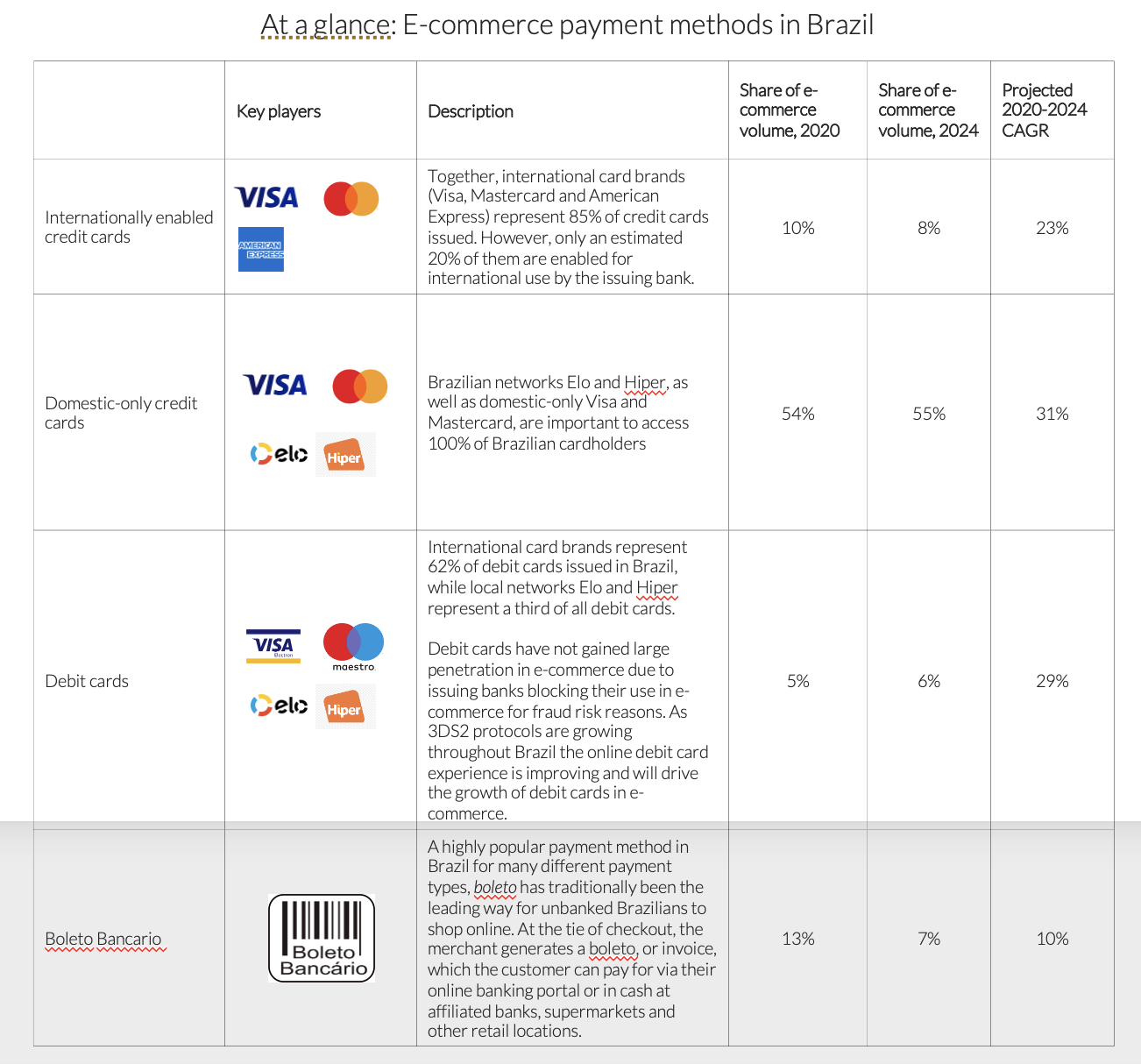
In addition, offering local support, which understands the needs and reality of the local consumer, proves to be an important differential for those looking to grow at this time in the country, especially for foreign companies that want to strengthen their presence here.
The good news is that it is not necessary to have this expertise internally in the company, and it is entirely possible to count on a partner who knows the local market, its specificities, its tax system, and much more. Thus, those who seek to grow in this moment of recovery in the country should not waste time. Invest in good online payment platforms, rely on a partner to provide support and local service, and start selling more and better.
To start this journey in Brazil, count on BoaCompra and leverage a one-stop solution to accept local payments in the country. Get in touch with us and learn how BoaCompra can help your company reach new markets:

